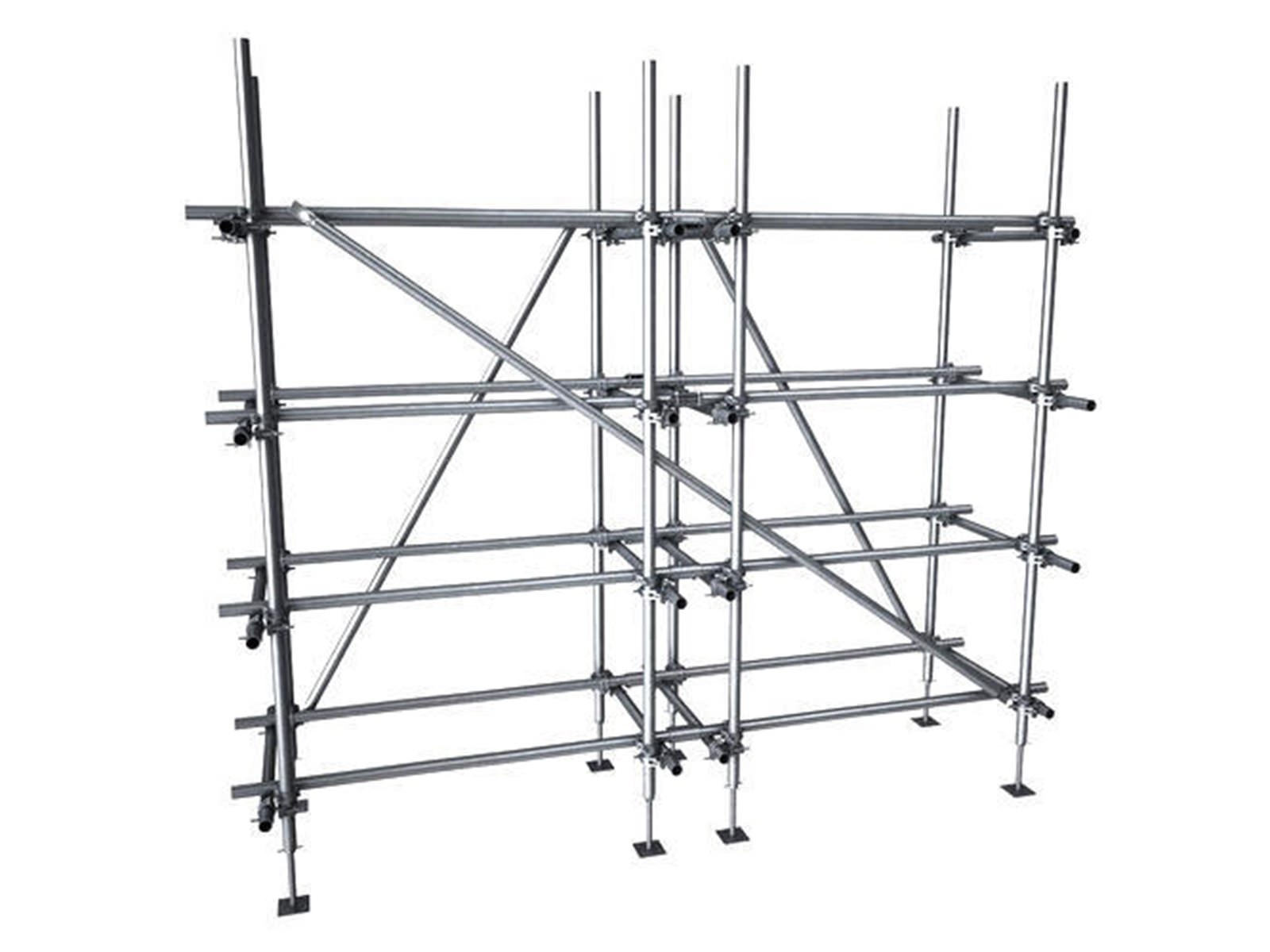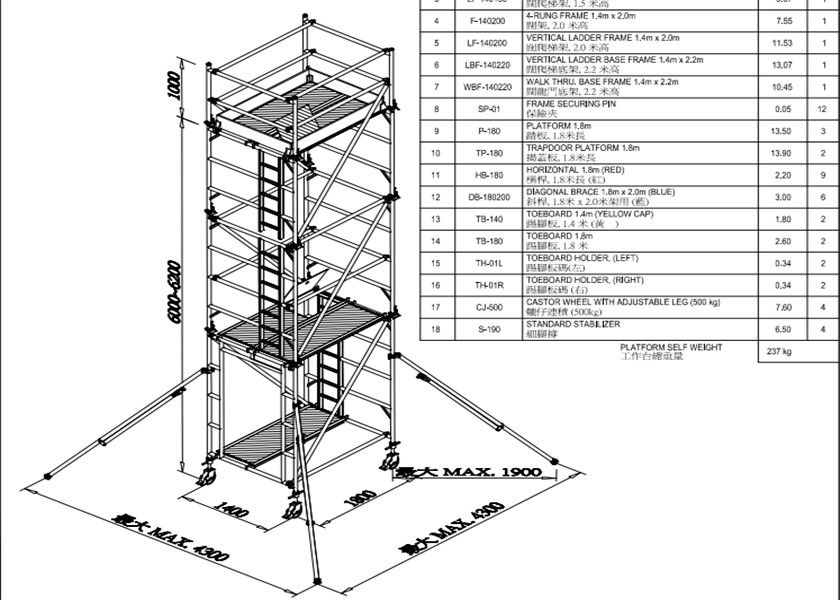Scaffolding in High Winds: Security Precautions and Tips
Scaffolding Regulations: What You Need to Know ==============================================
Recognizing scaffolding guidelines is important for employee safety and security in building. Regulations established by OSHA cover layout, weight capability, and examinations. Different systems like modular and suspended offer versatility for tasks. Routine assessments and quick modifications assure stability. Training for assembly and drop security is crucial. Current modifications in regulations may affect demands. Remain educated for a complete grasp of scaffolding safety.
Importance of Scaffolding Regulations

Recognizing the relevance of following scaffolding laws is paramount in making certain the security of workers and the general public on construction sites. Safety and security conformity within the building market is not only an essential requirement however additionally an ethical commitment to shield people from injury. By adhering to rigorous scaffolding guidelines, business can successfully handle risks associated with operating at elevations, hefty loads, and possible dangers.
Danger administration plays a vital function in implementing scaffolding regulations. Identifying possible threats, assessing their likelihood and potential influence, and taking positive actions to alleviate these risks are fundamental steps in ensuring a secure working environment. Adherence to policies aids in reducing crashes, injuries, and fatalities connected to scaffolding activities. It likewise promotes a society of safety and security awareness among workers and emphasizes the importance of following proper procedures and guidelines.
OSHA Specifications for Scaffolding

The Occupational Safety and Health Administration (OSHA) has actually established durable standards for scaffolding to ensure the safety and security of workers in the building and construction sector. These laws are in place to stop mishaps and guarantee that scaffolding systems are erected and utilized appropriately.
OSHA's security guidelines for scaffolding cover aspects such as the style, building and construction, and positioning of scaffolds, as well as the proper use scaffolding equipment and drop defense actions.
According to OSHA requirements, scaffolds should be able to support their very own weight and at the very least four times the optimum intended tons without failure. They ought to likewise be outfitted with guardrails, midrails, and toeboards to stop drops. Routine assessments, commonly done by a proficient person, are essential to recognize and address any type of possible threats without delay.
Adherence to OSHA guidelines is important for building companies to maintain a risk-free working environment and stay clear of expensive fines. By adhering to OSHA's safety guidelines for scaffolding, employers can safeguard their workers from accidents and develop a society of security on construction sites.
Types of Scaffolding Equipments
Different scaffolding systems are utilized in the building market to offer temporary support for workers and materials at elevated heights. 2 common types of scaffolding systems are modular scaffolding and suspended scaffolding.
Modular scaffolding, also known as system scaffolding, is prominent because of its convenience and simplicity of assembly. It consists of pre-engineered components that can be quickly linked and adjusted to fit various project requirements. Modular scaffolding is fit for projects that call for constant reconfiguration or where gain access to needs may change throughout building.
On the various other hand, suspended scaffolding is a system that hangs from the top of a structure rather than being supported from the ground. It is often made use of for jobs like home window cleaning or exterior structure maintenance. Put on hold scaffolding provides unhindered access to the facade of a building and is perfect for projects where ground-based scaffolding is not practical or difficult. Both modular scaffolding and put on hold scaffolding play essential functions in ensuring the safety and effectiveness of construction jobs at raised heights.
Scaffolding Examination Demands
Examining scaffolding is a critical facet of making sure construction website security and conformity with guidelines. The frequency and standards for scaffolding evaluations are essential to preserving a safe work environment. According to regulations, scaffolding must be inspected by a proficient person prior to each job change and after any event that might affect its architectural stability, such as severe weather or impact from devices. In addition, official assessments should be carried out at regular periods, normally weekly, to guarantee ongoing conformity with safety and security standards.
Conformity with assessment demands is crucial to prevent crashes and assure the stability of the scaffolding structure. Any type of offenses recognized throughout assessments need to be without delay addressed and fixed to minimize possible threats to employees. Usual infractions consist of missing or harmed parts, inadequate supporting, incorrect planking, and overloading. Routine and detailed assessments, along with speedy rehabilitative activities for any kind of non-compliance, are important to maintaining a safe scaffolding system on construction websites.
Training and Qualification for Customers
To guarantee the safe use scaffolding on building and construction websites, appropriate training and accreditation for users are necessary. Certification needs for scaffolding users differ depending on the area and type of scaffolding being utilized. In most regions, users are called for to finish a training program that covers topics such as scaffold setting up, evaluation, safe usage, and drop defense. These training programs are developed to make sure that people making use of scaffolding have the essential expertise and abilities to work safely at elevations.
Accreditation requirements may also include demonstrating effectiveness in setting up and taking apart scaffolding, comprehending weight capacities, and understanding exactly how to recognize potential threats. Companies are generally in charge of ensuring that their workers obtain the appropriate training and accreditation before enabling them to make use of scaffolding on website. Normal correspondence course might be necessary to keep certifications up to day and reinforce risk-free techniques. By mandating training programs and certification needs, authorities intend to minimize the danger of crashes and injuries connected to scaffolding usage.
Recent Adjustments in Scaffolding Rule
Recent adjustments in scaffolding regulations have brought about brand-new security requirements that are shaping the construction industry.
These regulations are influencing how scaffolding is made use of on work sites and are influencing security methods to make certain workers are better protected.
It is important for those in the building and construction market to stay educated and certified with these advancing regulations to maintain a risk-free work environment.
New Safety Requirements
Strenuous security procedures have actually been carried out as component of the current adjustments in scaffolding legislations to boost workplace security for building employees. Safety and security training has ended up being a prime focus, ensuring that employees are appropriately prepared to take care of scaffolding tools and operate at heights securely.
These brand-new demands mandate that all employees get comprehensive security training before engaging in any type of scaffolding tasks. In addition, enforcement procedures have been enhanced to ensure compliance with these security methods. Assessments are being carried out more regularly, and extreme repercussions remain in location for non-compliance.
Influence On Building Market
With the recent modifications in scaffolding laws, the building market is experiencing a considerable change towards heightened safety and security requirements and increased accountability.
These adjustments have had a notable effect on labor performance within building and construction jobs. The need to adhere to more stringent guidelines has brought about a much more organized and safety-oriented technique to scaffolding use, which consequently has influenced the total effectiveness of labor on building and construction websites.
Additionally, the updated laws have introduced cost implications for building and construction firms. While making sure compliance can result in enhanced first costs as a result of the execution of more secure scaffolding systems, in the long-term, it can result in reduced expenses pertaining to accidents, injuries, and lawful issues, eventually profiting both employees and employers.
Frequently Asked Questions
Can Scaffolding Regulations Vary From State to State in the Us?
Yes, scaffolding policies can differ from state to state in the US. These differences might consist of variations in security steps, examination requirements, training criteria, and acceptable products. It is necessary to comprehend and follow the particular laws in each state.

Are There Certain Weight Constraints for Scaffolding Equipments?
Weight limitations on scaffolding systems are important for security. These constraints differ based on the kind of scaffolding and tons capability. Following weight guidelines assures structural stability and minimizes the danger of mishaps, highlighting the value of security precautions.
How Often Should Scaffolding Equipments Be Checked for Safety?
Scaffolding systems must be looked for safety and security regularly to assure conformity with guidelines and prevent mishaps. The regularity of evaluation relies on elements such as use, environmental problems, and supplier referrals, commonly ranging from once a week to regular monthly. Arranged upkeep is important.
Are There Any Kind Of Specific Demands for Educating on Specialized Scaffolding Solutions?
Specialized training for scaffolding systems includes particular qualification requirements to ensure secure procedure. Training ought to cover the distinct functions and dangers of specialized systems, highlighting appropriate assembly, use, and dismantling procedures for optimum security compliance.
Exist Any Kind Of Fines for Non-Compliance With Scaffolding Laws?
Non-compliance with scaffolding guidelines can lead to possible fines and enforcement activities. Failing to adhere to these guidelines might result in expensive effects, legal problems, and compromised precaution, highlighting the value of stringent compliance. rubbish chutes
Final thought
To sum up, adherence to scaffolding regulations is essential for making sure the safety and security of employees and stopping crashes on building and construction sites.
OSHA standards lay out the demands for appropriate scaffolding usage and examination. Different sorts of scaffolding systems have certain guidelines that need to be adhered to.
Training and accreditation are vital for individuals to comprehend exactly how to safely work with scaffolding. Stay updated on any kind of recent modifications in scaffolding legislations to maintain compliance and promote security requirements.